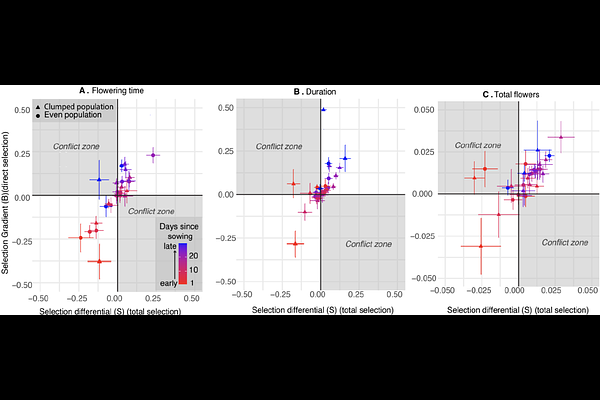Longitudinal and cross-sectional selection on flowering traits in a self-incompatible annual.

Longitudinal and cross-sectional selection on flowering traits in a self-incompatible annual.
Leventhal, L.; Bai, K. J.; Peters, M. A. E.; Austen, E. J.; Weis, A. E.; Ison, J. L.
AbstractNet selection on a trait reflects the association of phenotype to fitness, across an entire life cycle. This longitudinal estimate of selection can be viewed as the summation of selection episodes, each characterized by a cross-sectional estimate. Selection may be consistent in direction and strength across episodes for some traits, fluctuating in others, and for some, concentrated in a single intense event. Additionally, while selection on plant reproductive traits is predicted to be stronger through male fitness than female fitness, male fitness remains less studied. We investigated how selection on flowering traits in Brassica rapa varied temporally and spatially by measuring male reproductive fitness in four experimental populations with two spatial arrangements. To estimate longitudinal and cross-sectional selection, we introduced male-sterile plants at successive intervals. We genotyped over 3000 plants and calculated selection on flowering time, duration, and total flowers. Cross-sectional analyses revealed directional selection was common, but patterns were masked by longitudinal estimates. Comparing selection gradients and coefficients revealed conflicting selection directions, suggesting the importance of trait correlations in selection estimates. Spatial population arrangement significantly impacted pollen movement and the strength of selection, demonstrating how breeding timing, spatial aggregation, and male fitness interact to create complex evolutionary dynamics.